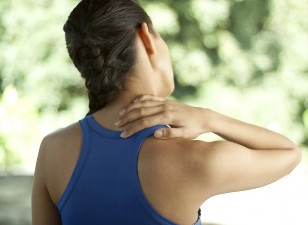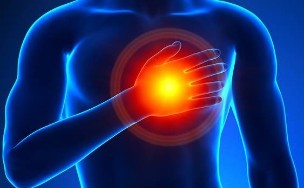Osteochondrosis of the cervical spine is a progressive disease, the degenerative-dystrophic Changes in the intervertebral disc, accompanied by Their Deformation and alteration of the structure.

Cause of the disease. The main reason - a violation of the metabolic processes in the body and as a result the deterioration of the blood supply to the intervertebral discs. More rarely, the disease occurs as a result of injury to the cervical spine Department of the spine. The emergence of osteochondrosis contribute: a seat at the end of Way, bad posture, long "sitting life" at a Desk, in front of the Computer, etc.
Osteochondrosis of the cervical spine, the treatment at the clinic
Treatment of cervical degenerative disc disease in the clinic the Eastern methods Medicine. During the treatment methods of Tibetan can be Medicine Point Massage and herbal medicine, the methods of Chinese medicine – it is, first and foremost, acupuncture and Moxibustion. Possible is the use of manual soft Therapy, osteopathy (including "Cranio-sacral techniques", represent a method of soft effects on the bones and the soft structures of the skull; the purpose of the procedure - Restore the correct circulation of the spinal fluid is) and other the methods available to the doctors of the clinic.

The treatment of osteochondrosis of the cervical spine Spine – one of the basic directions of the activities of the clinic. Based on a lot of experience in this direction, we can use the results to confirm that the treatment of these diseases (including. by protrusions and hernias Spine) is quite satisfactory. Treatment of cervical degenerative disc diseases individually for each patient, carried out and comprehensively (in the course of the Session usually some of the methods of treatment involved, the duration of the session – 1-1,5 hours). Pain in the neck area, in General, up to 70% already after 2-3 a therapeutic session. The treatment of osteochondrosis in the average of 5 to 11 Meetings. During the treatment, the exposure, and pathological changes will be in the body, which led to the emergence of the disease.
Characteristics of degenerative disc disease of the cervical spine
Cervical osteochondrosis, in comparison with thoracic and lumbar vertebrae Osteochondrosis, has a number of functions. These properties are defined, especially Way, peculiarities of the structure of the spine the cervical spine, the dimensions of bone structures this is very much smaller than the vertebrae of other departments. The neck part of the mobile spine, hold the head, he is continually charged. Osteochondrosis is usually the the movable segments (back-With-5 - Of-7) on, and determines Account the symptoms of degenerative disc of the neck, diseases of the spine.
In the area of the neck in a relatively small circumference numerous vascular and nervous structures, including. here goes Vertebral artery, which supplies blood to the rear sections of the brain - the Medulla Oblongata and the cerebellum. By the compression of the vertebral artery due to the lower Circulatory disorders as a result of their stenosis, the development of ischemia of the brain and The spinal cord and in the acute case, this can lead to the roll stroke. Symptoms of a vertebral artery - dizziness, incoordination Movements, deterioration of hearing and Vision.
Due to the compactness of the neck with a small spine the displacement of the vertebrae or muscle the cause for constriction of the nerve can relieve tension Terminations (pinched nerve in the cervical spine), or vascular structures. The resulting time osteophytes worsen in the conditions of the compactness of the cervical spine the Situation.

Cervical osteochondrosis leads to the formation of protrusion and hernias the spine, the (tension in addition to the above - mentioned reasons, muscle Displacement of the cervical vertebrae, the formation of osteophytes), comprimarea nerve root, they call the swelling and inflammation. Finally, given the small size of the vertebral body Channel of the cervical spine, nerve root, it extends over the entire circumference, in addition, is compressed (Compression is already formed in the spinal canal is located). The clinical symptoms of this Status - pronounced pain syndrome.
Osteochondrosis cause spinal cord compression, and because of the narrowness of the vertebral canal of the cervical spine the spine is more common than in the thoracic and lumbar spine is determined. It in the Zone of failure not only the neck and head, but also the upper traps (that it is noted more often) and the lower limbs. Due to their properties of cervical osteochondrosis more often (in comparison to ble and breast), which leads the patient to morbidity.
In summary, we have the factors, the compression of the different vascular lists and nervous structures with cervical osteochondrosis
- Displacement (slipping) of a vertebral Disc Spondylolisthesis. Most of the time - offset is minimal, since even a slight displacement Vertebrae in the cervical spine, causing paralysis, and is often the cause of lethal Result.
- A protrusion and hernias Spine as a result of the development of degenerative disc disease of the cervical spine the spine is straightened and in the interior of the vertebral canal.
- Osteophytes. As a result of cervical degenerative disc disease at the sides Vertebral body and in the area of the joints form bony growths - osteophytes. Osteophytes on the sides of the vertebral body, irritate adjacent to him the muscles, the Tonus increases. The increase in load on the vertebrae, this leads to an increase in pressure on the spinal disc, the height this reduces, increases the risk for a bulging Disc. Osteophytes, in the direction of the channel, where the Vertebral artery, which may be the cause of your stenosis.
- Reduced height of vertebral disc (Flattening of the intervertebral disc)is often the cause of compression of the nerve root by reducing the the vertebral foramen. In addition, in this case, by an unfortunate twist Neck possible Subluxation of the cervical vertebrae, resulting in additional compression.

Cervical Osteochondrosis Symptoms.
Symptoms of degenerative disc disease of the cervical spine the spine hanging in front of all of the, what was the subject of the defeat. Distinguished: radicular Syndrome (compression of the spinal roots), compression Spinal cord ischemia of the spinal cord in consequence of stenosis of the vertebral artery, resulting in disturbed blood supply to the brain stem, the cerebellum, the cranial bones Nerve and inner ear. The following are the most commonly occurring syndromes.
- Radicular syndromes - cervical radiculitis. Arise in comprimarea roots (pinched nerve in the cervical spine). These symptoms of cervical degenerative disc disease associated with feeling of pressure (compression) of nerve roots. Radiating pain from the neck down up to the shoulder blade and on the shoulder, the forearm (on the outer side of their surface) on the fingers Hands. It creeps sponginess, "run", tingling Forearm, Hand and fingers. Wherein, depending on which Segment amazed, the symptoms of degenerative disc disease of the cervical spine are distinguishable. For Example, in lesions of the nerve roots of the Central nervous-be pie thumb, index and middle finger, and in lesions of the nerve roots of the Plexus nerve Ring and little Finger (the Rest of the symptoms are the same).
- Irritative Reflex Syndromes. Symptoms: "burning pain" in the neck-occipital Area or in the area of the neck, (after sleeping, when turning the head, sneezing, etc.). Is irradiatsiya in the shoulder and the chest.
- The syndrome of the vertebral artery with cervical osteochondrosis. Symptoms: throbbing, or "burning" headache, hooked neck, head, dark and the area above the eyebrows. Pain is often a constant, rarely paroxysmal, reinforced after a long stay in the inappropriate pose in the movement. In the case of General weakness Organism is nausea, loss of consciousness. Can be unilateral occur auditory disturbances: noise, diminished visual, vestibular disorder. In Patients, with coronary heart disease may be the display, pressing pain in the heart area. Maybe visual acuity reduced, eye pain, etc.
- Cardiac Syndrome. Symptoms of osteochondrosis in this syndrome are the symptoms of true Angina pectoris. It is assumed that the muscle contractions in the area of the heart due to compression spinal roots of the spine in the lower segments of the neck and are Your Reflex Reaction. Cardiac syndrome occurs in roots in case of irritation of the nerve big chest muscle, or root fibres of the phrenic nerve, since its fibers go to the pericardium. Clinical symptoms: aching pain in the heart area. Pain can be paroxysmal and may last up to several hours. Reinforced at sharp turn of the head, coughing, sneezing. Possible Tachycardia, Arrythmia. Coronaro sclerosis agents do not alleviate the pain. Electrocardiogram recorded during the Heart attack, not recognize the signs of violation of the coronary blood flow.



































